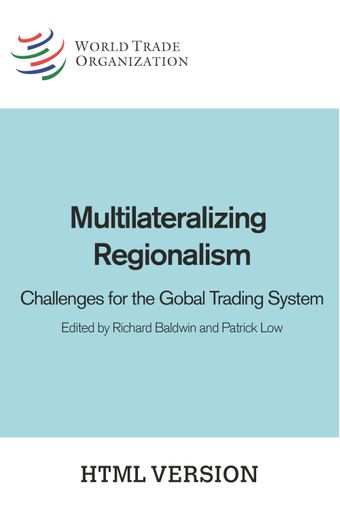Multilateralizing preferential trade agreements: A developing country perspective

- Authors: Bernard Hoekman and L. Alan Winters
- Source: Multilateralizing Regionalism , pp 16-16
- Publication Date: janvier 2009
- DOI: https://doi.org/10.30875/479c1d1c-en
- Langue : Anglais
Preferential trade agreements (PTAs) continue to proliferate. Always a central element of the trade policy strategy of European countries, ‘regionalism’ has now become the dominant form of international cooperation on trade policy for virtually all the members of the WTO, developed and developing. The proliferation of PTAs has been accompanied by steadily declining barriers to trade generally, and high growth rates in world trade. The uniform tariff equivalent of all applied most favoured nation tariffs of high-income OECD countries in 2005 was 4.8 per cent. Excluding agricultural products, the figure drops to 2.7 per cent (Kee, Nicita and Olarreaga, 2008). For the developing countries, the focus of this chapter, applied MFN tariffs have also fallen substantially; Kee et al. estimate that the median average overall trade restrictiveness index was 7.5 per cent for the fifty-seven countries for which data are available in 2005, compared with 12.3 per cent ten years earlier. This reduction in external MFN protection reflects mostly unilateral, autonomous actions by governments (Martin and Messerlin, 2007). While PTAs can be building blocks or stumbling blocks for multilateral liberalization, it is incontrovertible that the level of MFN trade barriers has been falling.
-
From This Site
/content/books/9789287046666s013-c009dcterms_subject,pub_countryId-contentType:WorkingPaperSeries -contentType:Periodical -contentType:BookSeries -contentType:ReportSeries105


